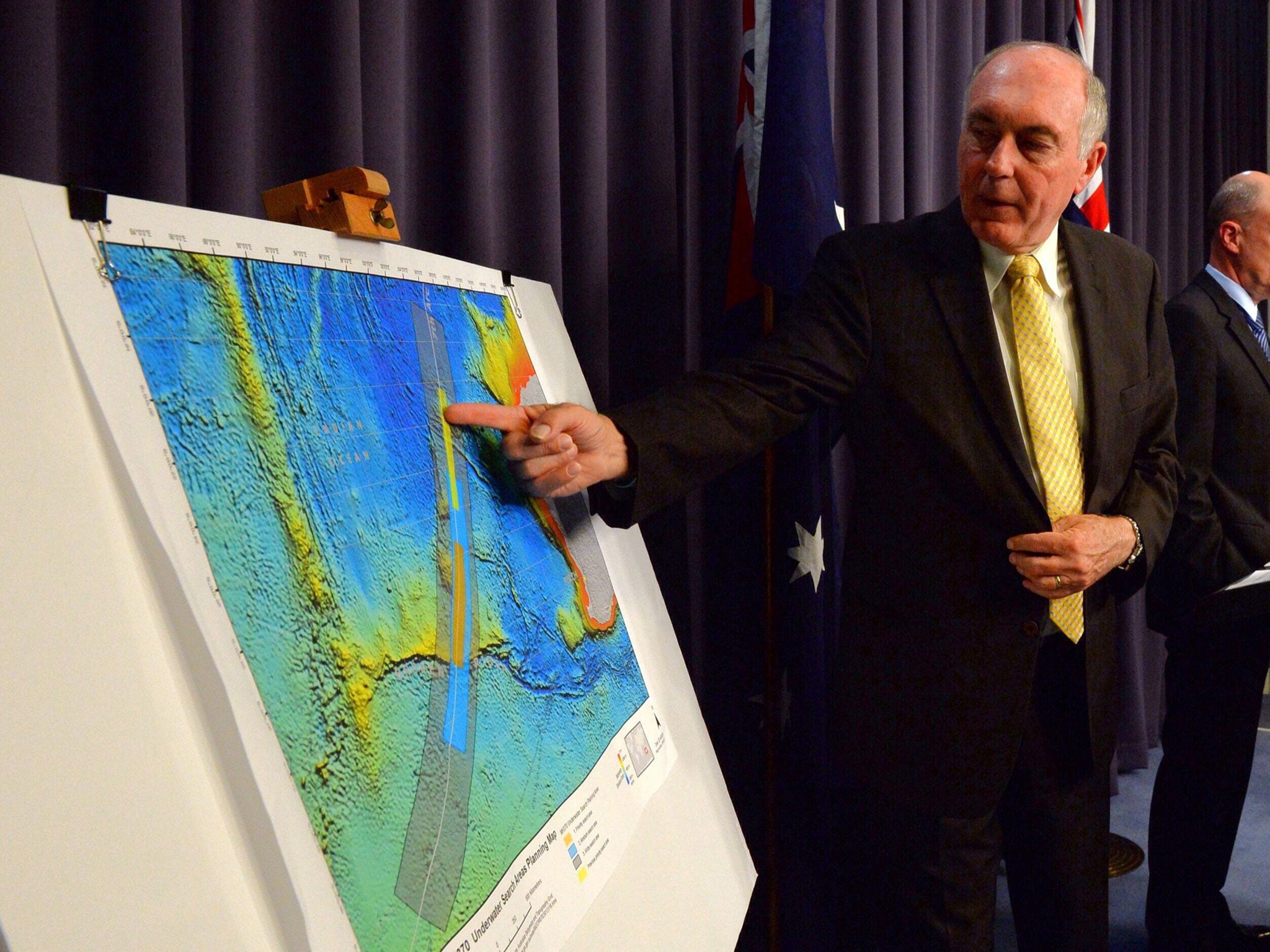MH370: Search restarts as investigators consider 1,000 possible flight paths
Six months after Malaysia Airlines 370 mysteriously vanished, authorities are looking at thousands of possible flight paths

It has been six months since Malaysia Airlines flight 370 vanished over the Indian Ocean and yet the mystery endures. With 1,000 flight paths still to investigate, a new year-long search operation will be launched, according to the coordinating task force.
The Australian Transport Safety Bureau (ATSB) is facing an “intimidating” challenge as it prepares a fresh off-shore investigation for the missing aircraft that could cost up to £29.5 million.
Martin Dolan, ATSB’s chief commissioner, made no promises that the wreckage of MH370 would be found, and admitted that the situation is “unprecedented.”
He told the Telegraph: “I don’t want to raise the hopes of the families of the people who were lost in this accident and then dash them again. I don’t want to create a false hope.
“But I don’t want them to write it off either, because we do think we have a reasonable prospect. We just don’t have a guarantee.”
Flight 370 went down in a remote and inhospitable area of the Indian Ocean, Dolan assured, but that expanse is over 600,000 sq miles – more than three times the size of Spain.
He said a "reasonably clear picture" of the plane's final trajectory has emerged, even if there are still about 1,000 possible paths it could have taken.
"There is an infinite possible number of tracks that the aircraft could have flown along, but for practical purposes there are about 1,000," he said.
Carrying from Kuala Lumpur to Beijing 227 passengers and 12 crew members, the Boeing 777 known as MH370 vanished in the early hours of March 8.
Search operations lasted until late May with no significant discoveries – no trace of the plane nor its black box. Having spent months narrowing down the aircraft’s possible location, Australia and Malaysia have agreed to split the cost of the revived investigation. China, which had 153 citizens on board, is “reflecting” on its role in operations, and will play no immediate part. Recent reports accuse Chinese police of detaining and beating the families of MH370 passengers.
The Australia-Malaysia search operation will begin on September 22 with the deployment of a vessel called Go Pheonix. It will use “next generation sonar synthetic aperture” equipment capable of producing high-quality images of the bottom of the ocean, according to Mr Dolan.
Fugro, a Dutch engineering firm that provides services to oil and gas companies, has been contracted to manage the high-profile hunt, and will assign three vessels in the coming weeks to search operations.
The physical search, as well as data analysis in the UK, Australia and France, will focus in part of the southern Indian Ocean known as the “seventh arc.” It is 2,485 miles long.
Mr Dolan said: "We know that the aircraft is in the water or on the sea floor close to that arc, and we are doing everything we can - which is a lot - to make sure we find it there.”
Join our commenting forum
Join thought-provoking conversations, follow other Independent readers and see their replies
Comments